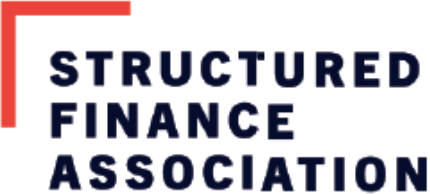The COVID-19 Pandemic Requires Bigger and Different Thinking Than 2008
Provided by SFA
By: Michael Bright
This piece originally appeared in the Monday, April 13th edition of Issues & Insights
I remember very clearly my first day in Washington, D.C. in 2008. Then-Secretary of Treasury Hank Paulson testified before the Senate Banking Committee to ask for a massive cash infusion into the financial system as the nation found itself on the brink of the most serious financial crisis since the Great Depression. I had just come from Charlotte, North Carolina, where I had been laid off from my trading job at Wachovia. I came to Washington to lend expertise and it quickly became clear that challenge number one was helping policymakers understand the magnitude of the problem.
Fortunately, it didn’t take long to paint a clear picture of the stark reality our nation was facing. Congress ultimately passed legislation allowing Treasury to inject capital into the banking system, and the Federal Reserve stood up an alphabet soup of new programs to unlock financial markets, keep thousands of community banks across the country solvent, and prevent another Great Depression. While controversial at the time, taxpayers were eventually repaid in full for backstopping those programs, and – more importantly – those actions prevented catastrophe.
Twelve years later, we face another crisis, although this time not of our own making and for far different reasons. By all initial estimates, this economic downturn could be much deeper. In the span of just a few weeks, unemployment claims are hitting record highs. Gross domestic product (GDP) is expected to tank. And the financial markets have been struggling to keep their footing, with volatility through the roof.
Some have called the 2008 financial crisis a “test run” for today, but this crisis is different, and it is important that policymakers recognize that. We should, of course, borrow from tools developed in 2008. But we also need to recognize the differences between today’s economy and the economy we had then.
For one, where borrowers get loans today is much different than it was over a decade ago. The entire online lending industry did not exist in 2008. Today, though, it serves millions of Americans in innovative ways. The Federal Reserve currently seems to be dusting off the playbook from 2008 and lending predominately to industries that existed then. But excluding consumer installment loans from liquidity assistance and not allowing them to access facilities such as the term asset-backed securities loan facility (TALF) would be a mistake. This industry serves more diverse communities than traditional banks and is enormously effective at getting capital to individuals and businesses who need it most. That is something we desperately need right now.
Another major difference between 2008 and today is the role of non-bank mortgage servicers. Lending in 2008 was bank-heavy, with a dwindling role for government-sponsored enterprises (GSEs) Fannie Mae, Freddie Mac, and the Federal Housing Administration (FHA). Today, however, the market is barbelled. On one end are non-bank servicers, who send homeowners their monthly mortgage statements and process their payments. On the other are the investors who are entitled to receive the monthly mortgage payment with the explicit guarantee of U.S. taxpayers through the GSEs. In between, there is a lot of stress.
Buying agency mortgage-backed securities (MBS) to stabilize mortgage interest rates was the right approach in 2008, and it certainly has some value today. But that alone won’t work in this particular crisis. In fact, too much agency MBS buying could be dangerous. Global markets today know that Fannie, Freddie, and Ginnie all have explicit government backing. The Federal Reserve had to step in in 2008 because such a guarantee has some ambiguity. But today, that’s not a problem. Instead, today we need to ensure that servicers can advance missed principal and interest payments to bondholders so that we don’t have a default on government-backed bonds, or a disaster of trying to move servicing rights in the midst of a major downturn. The 2008 playbook of shotgun marriages between banks isn’t likely the right solution today. Instead, we need to immediately get liquidity into the non-bank servicing market, and deal with oversight or formal backstop and resolution infrastructure once this is done.
Finally, everyone needs to understand that the nature of this crisis is very different than 2008. This global pandemic is undercutting an otherwise healthy consumer, global economy, and well capitalized banking system. Now is no time for timidity. When the Federal Reserve used innovative tools in 2008, it saved the system but ended up with a black eye in the form of limitations placed on its emergency lending authorities and a lot of “Audit the Fed” bills in Congress. Understandably, the central bank doesn’t want to deal with something like that again. That is why it is also vitally important that lawmakers today set the tone and give the Federal Reserve a green light, with proper oversight, to take all bold actions it deems necessary.
We need to keep in mind what type of market we want to have when we come out of this crisis. Decisions we make now will have lasting consequences. If the Federal Reserve and Treasury only provide liquidity support to government-backed residential and commercial bonds, for example, then we will emerge with nothing but a government-backed system for a generation after COVID-19. If innovative lending platforms that serve some our most diverse communities and businesses go bankrupt, we will set ourselves back more than a decade. These industries require years of infrastructure build to be viable and won’t just resurrect themselves overnight. If we don’t want every market to be reliant on government-backing down the road, the private credit markets – at a minimum, private MBS and commercial MBS (CMBS) – require liquidity help now. And this is, at its heart, a liquidity crisis.
In 2008, Washington took bold action. Emergency facilities used then are needed again, but so too are new facilities and new ideas to best serve the 2020 economy. Treasury, the Federal Reserve, other regulators, and Congress should support today’s financial lenders and intermediaries aggressively so that they can do what we need most of all – aid our economy’s speedy recovery, including imperative lending to households and businesses struggling to stay afloat. This is bigger and different than 2008; we need to think bigger and differently.

